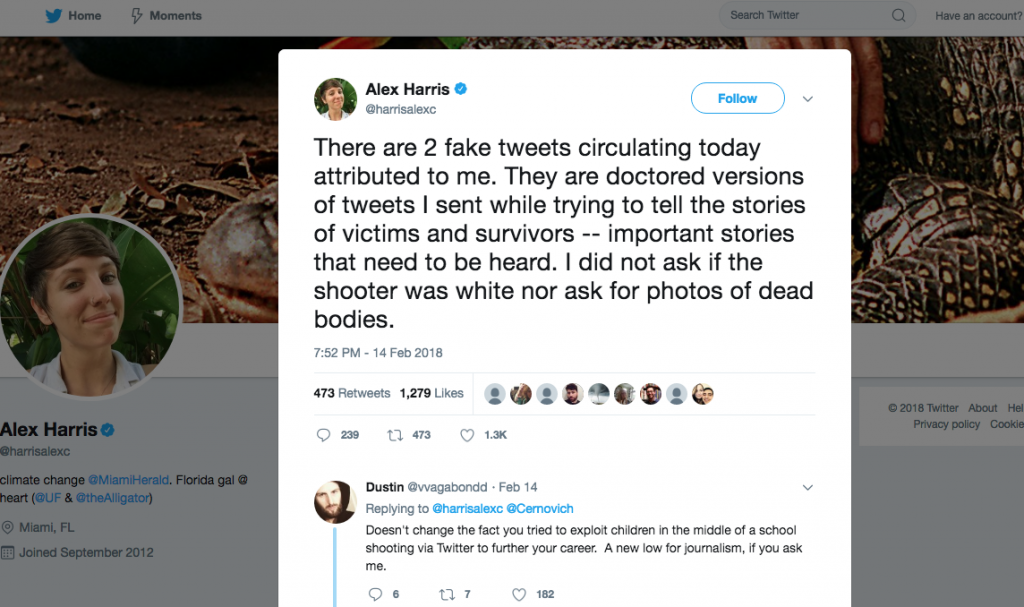Last week in class we spent some time laying the groundwork for our study of mass media and the societal effects of modern communications technologies. To understand media you have to understand communication and that begins with the ancient art of rhetoric and the modern study of semiotics and how we share and process symbols.
We discussed how we, as human beings, are born communicators. We like to connect with others and share our experiences. We are constantly communicating even when we’re not aware of it. We cannot NOT communicate. We discussed how everything that we SAY (or don’t say) and DO communicates…including our choice of clothing, our body language, and our use of space.

These points were illustrated and driven home in a video that circulated over the weekend. You might recognize this frame from a video clip that went viral on social media. The students had participated in the March for Life demonstration earlier in the day and were waiting for their buses to arrive to take them home. As you can see, some of the students (including Sandmann) are wearing MAGA hats. Phillips, an activist and Omaha tribal elder, had participated in The Indigenous Peoples March earlier in the day. A third group, members of the Black Hebrew Israelites sect, were also present and a factor in what transpired.
A real problem here is that many made up their minds about what happened on the steps of the Lincoln Memorial on Friday based on very little evidence…and evidence that may have been carefully selected to present a particular narrative. If you are willing to invest a bit of time to dig a little deeper, and are willing to keep an open mind, you may find out that your initial gut reaction is not entirely supported. In fact major news organizations are updating their initial posts and writing new commentaries to include evidence that became available in a number of long, unedited, videos posted to YouTube. You can find links to these videos in a commentary posted at the Reason.com website.
This week we’ll explore issues related to social media including: viral videos, manufactured outrage, public shaming, and doxing. This weekend’s events contains all of these and more. Later in the semester we’ll explore “fake news” and how confirmation bias and uncritical thinking are key factors in how so many are so easily misled by propaganda and biased reporting.
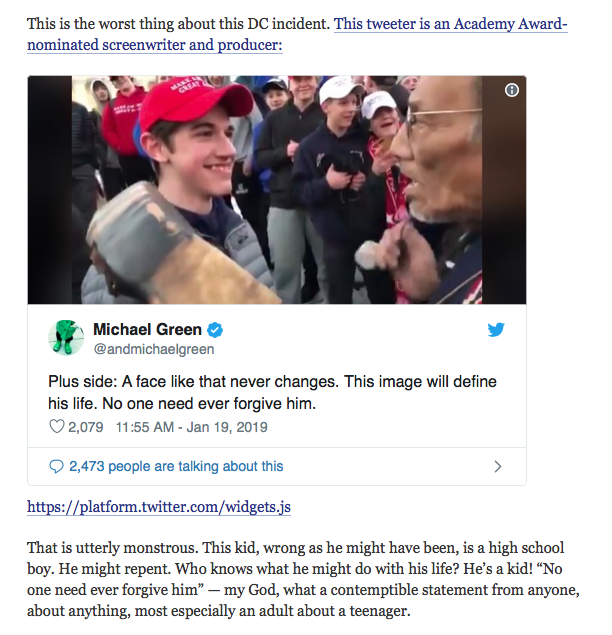
The screen shot on the left includes a tweet from Michael Green, a film and television screen writer. The commentary before and after the tweet is by Rod Dreher, an author and writer. You might consider the fact that Green and Dreher are modern-day storytellers and mass media heavyweights. They are shaping our culture and telling us how to think about the issues of the day. But they clearly see things from very different perspectives.

On this day set aside to honor the legacy of Reverend Martin Luther King, Jr., it is important to remember that racial bigotry remains and must be confronted at every opportunity. But as Reverend King reminded us repeatedly, only love drives out hate. Hatred is easy, fast, and decisive. Love is hard, slow, and often unsure. The choice is ours.

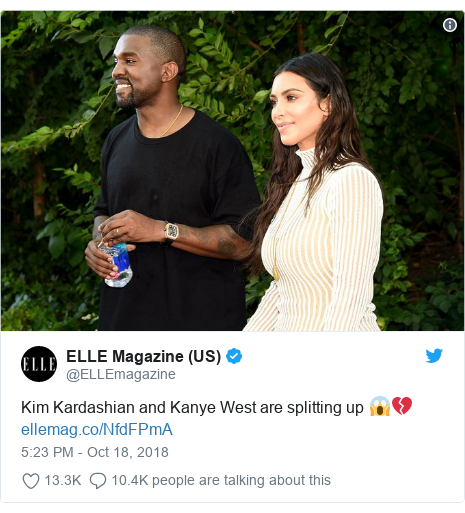
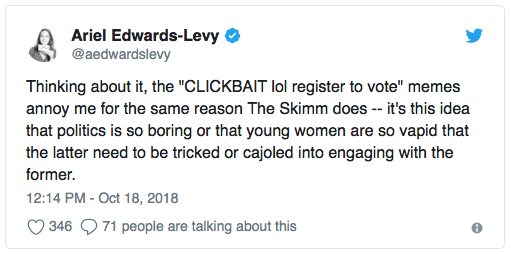
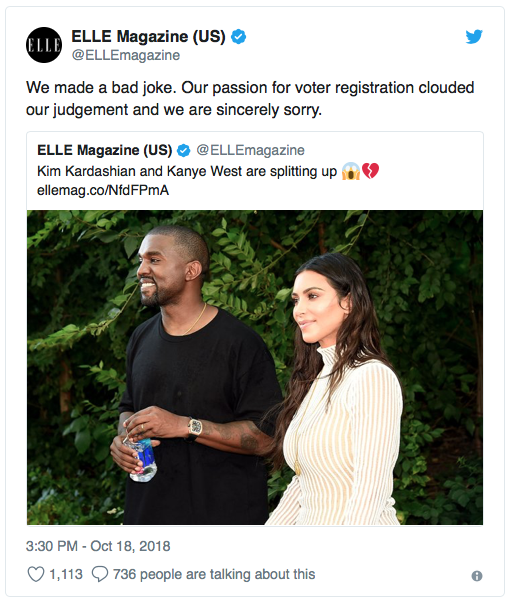



 According to Facebook,
According to Facebook,